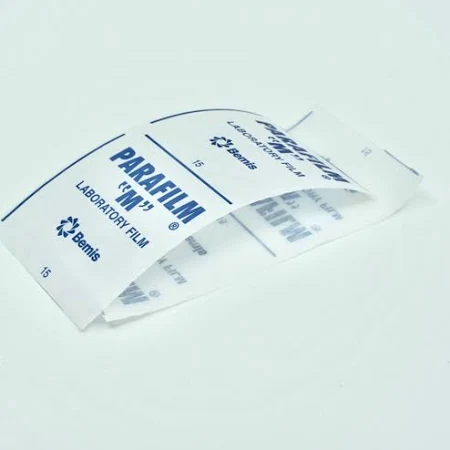A Comprehensive Guide for Mycology and Laboratory Use
If you’ve ever worked in a laboratory or dabbled in the fascinating world of mycology, you’ve probably encountered Parafilm. This stretchy, self-sealing, waxy film is a go-to for countless applications. From sealing petri dishes to creating a sterile environment for culture work, Parafilm is indispensable for researchers, mycologists, and scientists alike.
In this guide, we’ll explore what Parafilm is, how to use it properly, and its many applications, all while offering tips to make the most of this versatile tool.
What is Parafilm?
Parafilm is a laboratory-grade sealing film made from a blend of wax and polyolefin. It’s incredibly pliable, stretchable, and self-adhesive, making it ideal for creating an airtight seal without requiring adhesives or heat. This film is widely used in labs, mycology, food science, and other industries requiring sterile or controlled environments.
Key features of Parafilm include:
- Flexibility: It stretches up to 200% without tearing.
- Self-sealing properties: Forms a snug, airtight seal.
- Non-toxic composition: Safe for use in biological and chemical applications.
- Moisture resistance: Helps protect cultures and samples from contamination.
Why is Parafilm Popular in Mycology?
For mycologists, Parafilm is essential when working with petri dishes. It ensures that the contents inside—whether spores or mycelium—remain sterile by preventing the entry of contaminants such as mold, bacteria, or dust. Its ability to maintain a moist, controlled environment makes it indispensable for growing healthy cultures.
How to Use Parafilm: Step-by-Step
1. Cutting the Parafilm
Start by cutting an appropriate length of Parafilm for your application. A standard piece is about 2-3 inches long for sealing a petri dish, but this can vary based on the size of your container. Use clean scissors or a Parafilm cutter to avoid contamination.
Pro Tip: Store your Parafilm roll in a cool, dry place to prevent it from becoming brittle over time.
2. Stretch the Parafilm
Parafilm becomes easier to work with when slightly stretched. Gently pull on both ends until it thins out. Be careful not to overstretch, as it may tear.
3. Wrap Around the Petri Dish or Container
Place the stretched Parafilm around the edge of the petri dish lid, ensuring it overlaps both the lid and base. This creates an airtight seal while still allowing for gas exchange, which is critical for fungal growth.
For containers or test tubes, wrap the Parafilm tightly around the opening or lid. Its self-sealing nature ensures it stays in place.
Pro Tip: Avoid touching the inside of the Parafilm to keep it sterile. Use sterile gloves when working in sensitive environments.
4. Smooth Out the Seal
Once wrapped, smooth down the Parafilm to ensure it adheres completely. This eliminates gaps that could allow contaminants to enter.
Applications of Parafilm in Mycology and Beyond
1. Sealing Petri Dishes
As mentioned earlier, Parafilm is most commonly used for sealing petri dishes in mycology. It prevents contamination while allowing for the exchange of gases like oxygen, which is essential for fungal cultures.
2. Wrapping Agar Slants and Test Tubes
For long-term storage of fungal cultures in agar slants or test tubes, Parafilm provides a secure, airtight seal that protects against drying out or contamination.
3. Covering Laboratory Containers
Whether you’re working with flasks, beakers, or jars, Parafilm can be used to cover openings securely. It’s especially useful when working with volatile or reactive substances, as it provides a temporary yet effective seal.
4. Moisture Retention
Parafilm is excellent for preventing evaporation, making it useful for sealing small vials or tubes containing liquids.
5. Label Protection
Parafilm can also act as a protective layer for labels on petri dishes or containers, preventing smudging or damage from moisture.
Tips for Working with Parafilm
- Pre-Cut Strips for Convenience: If you use Parafilm frequently, pre-cut strips to save time during your work. Store them in a sterile container to maintain cleanliness.
- Avoid Overstretching: While Parafilm is flexible, overstretching can cause it to tear or lose its sealing properties.
- Work in a Sterile Environment: When using Parafilm for mycology or sensitive applications, ensure your workspace is clean and sterile to avoid contamination.
- Double-Wrap for Extra Protection: If you’re working with highly sensitive cultures, consider applying two layers of Parafilm for added security.
Storing Parafilm
Parafilm can degrade over time if not stored properly. To prolong its shelf life, keep it in a cool, dry place away from direct sunlight and extreme temperatures. A plastic bag or sealed container works well for storage.
Frequently Asked Questions
Q: Can Parafilm be reused?
A: No, Parafilm is designed for single-use applications. Attempting to reuse it can compromise its sterility and sealing ability.
Q: Is Parafilm autoclavable?
A: Parafilm is not heat-resistant and will melt at high temperatures. Avoid exposing it to autoclave conditions or open flames.
Q: Can Parafilm be used for food applications?
A: Yes! Parafilm is non-toxic and safe for food-related uses, such as sealing jars or bottles.
Where to Buy Parafilm
Looking to add Parafilm to your toolkit? At ShroomSpores, we stock premium Parafilm rolls that are perfect for mycology, laboratory, and research use. Order Parafilm online today and experience the difference it makes in your work.
Final Thoughts
Parafilm is an essential tool for anyone working in mycology or laboratory environments. Its flexibility, self-sealing properties, and versatility make it ideal for sealing, protecting, and maintaining sterile conditions. By following this guide, you’ll be able to use Parafilm effectively and maximize its benefits in your research and projects.
For premium mycology supplies, including Parafilm, petri dishes, and spore prints, visit ShroomSpores today!
